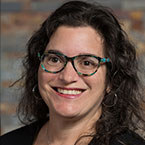By: Eileen Raynor MD, FACS, FAAP & Brian Reilly, MD, FAAP
At a young age, children typically learn to communicate by making sounds with their voice. Children with hoarseness, also called dysphonia, have a raspy and deeper than usual voice (or cry). This can make it harder to communicate through vocalizations. A hoarse voice can also make it difficult for others to understand the child's speech and affect how they make friends and do well in school.
It can be difficult for parents and teachers to recognize dysphonia, since children are rarely screened for the condition. Here is what you need to know about the evaluation and treatment for pediatric hoarseness.
What causes hoarseness in a child's voice?
Hoarseness in children can be mild or severe, depending on the cause of the condition. Here are potential factors causing your child's voice hoarse voice symptoms:
The common cold can cause hoarseness due to laryngitis (swollen vocal cords). Most laryngitis in children can cause vocal hoarseness symptoms for 1 to 2 weeks.
Allergies are also a common hoarse-voice cause. An allergic reaction or seasonal allergies to pollen may be a factor in your child's dysphonia. Hoarseness will last until allergy symptoms clear.
Overuse of vocal cords can strain your child's voice. This may include frequent yelling, singing and throat clearing. Harsh imitation sounds like roaring or shrieking can also cause strain. Hoarseness from strained vocal cords may last for 2 weeks or longer.
Vocal fold paresis/paralysis (VFP) is when one or both vocal folds (cords) are not moving properly. If this condition is causing your child's raspy voice, it can lead to a breathy sounding voice. It may also cause difficulty swallowing thin liquids like water.
Vocal fold lesions such as nodules and cysts are the most common cause of hoarseness. In addition to affecting the voice, they sometimes cause pain and a feeling that something is in the throat (which can lead to more throat clearing sounds). Children who are performers may be more likely to develop lesions if they are not following good vocal hygiene practices or working with a voice coach. This cause of vocal hoarseness can last for months, depending on how severe the lesions are and how they are treated.
Some rare congenital conditions can affect the nerves that control the larynx and cause a hoarse voice in your child. Your child's pediatrician may refer your family to a pediatric ear, nose and throat (ENT) specialist for screening.
Treatment for mild hoarseness in children
For many children who develop hoarseness, symptoms will clear up within a week. Mild vocal hoarseness can be treated by:
Resting the voice and throat
Using a humidifier in your home
Drinking soothing, warm liquids and plenty of water
How is prolonged or chronic hoarseness diagnosed?
If hoarseness in your child's voice lasts more than a month, talk with their pediatrician. Your child's doctor may refer your family to a pediatric ENT doctor for further evaluation.
What is a laryngoscopy?
According to the American Academy of Otolaryngology Head and Neck Surgery, a child should be referred for a laryngoscopy (visualization of the vocal folds) if hoarseness lasts 4 weeks. In some cases of hoarseness, such as unexplained vocal cord paralysis, a CT scan of the laryngeal nerves (voice box) might be requested.
A laryngoscopy is a transnasal (through the nose) procedure. Your child would be awake, so their doctor can assess vocal frequency and loudness. Sometimes a numbing spray can be used to make it less uncomfortable. The scope generally lasts less than 2 minutes. Most children 4 and older can participate in this procedure, which is conducted by a pediatric ENT.
Treatment for chronic hoarseness in children
Treatment options for prolonged hoarseness in children depend on the diagnosis from their doctor. Various treatments include:
Voice therapy, which is the most common treatment for prolonged hoarseness. It teaches children and parents techniques to reduce phonotrauma (vocal cord trauma). This option gives lesions and nodules time to heal.
Vocal cord injections may be used for vocal fold paralysis/paresis. Injected materials treat the weak or paralyzed cord to improve vocal quality. This is done under anesthesia in children.
Laryngeal surgery may be an option if your child has large nodules and has completed at least 6 months of voice therapy with little to no improvement in hoarseness. Surgery is typically used in severe cases of prolonged hoarseness. Children will still need to undergo voice therapy after the surgery once they recover.
Remember
Talk with your child's pediatrician if you have concerns about their hoarseness of their voice, how they communicate or any other questions about their health.
More information
About Dr. Raynor Eileen Raynor MD, FACS, is Chief of the Division of Pediatric Otolargngology at Duke University School of Medicine. Dr. Raynor is a member of the American Academy of Pediatrics Section on Otolaryngology – Head and Neck Surgery. Eileen Raynor MD, FACS, is Chief of the Division of Pediatric Otolargngology at Duke University School of Medicine. Dr. Raynor is a member of the American Academy of Pediatrics Section on Otolaryngology – Head and Neck Surgery.
|
About Dr. Reilly  Brian K. Reilly, MD, FACS, FAAP, is a pediatric otolaryngolist and a member of the American Academy of Pediatrics Section on Otolaryngology – Head and Neck Surgery. He is Co-Director of Cochlear Implant Team at Children's National Hospital. Brian K. Reilly, MD, FACS, FAAP, is a pediatric otolaryngolist and a member of the American Academy of Pediatrics Section on Otolaryngology – Head and Neck Surgery. He is Co-Director of Cochlear Implant Team at Children's National Hospital.
|